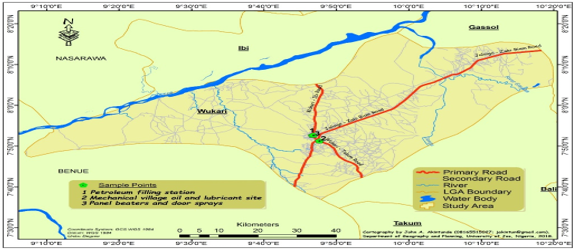Phytoremediation and Bioconcentration of Mineral and Heavy metals in Zea mays Inter-planted with Striga hermonthica in Soils from Mechanic Village Wukari
Keywords:
Minerals, Potentially toxic metals, Bio-concentrations, PhytoremediationAbstract
Phytoremediation involves the use of plants to remediate contaminated sites. This study evaluates the effect of phytoremediation on mineral and heavy metal concentration in agricultural soil within the vicinity of mechanic village Wukari using Zea mays interplanted with Striga hermonthica (SMV-MS), Zea mays alone (SMV-M), Zea mays inter-planted with Striga hermonthica alongside the application of fertilizer (SMV-MSF) and Zea mays alone alongside fertilizer application (SMV-MF). The bioconcentration of mineral and heavy metal and their translocation factors from the root to shoot of maize plants were estimated using empirical models. The result reveals that the efficiency of phytoextraction of the mineral and heavy metals were within the range: P (3.12 – 44.71 %), K (16.89 – 96.32 %), Mg (0.013 – 94.12 %), Mn (2.31 – 99.98 %), Si (20.92 – 52.07 %), Zn (2.74 – 21.65 %), Pb (10.44 – 100 %), Cd (0.75 – 42.85 %), Fe (7.42 – 98.57 %) and Al (19.14 – 98.69 %) respectively. The mean root and shoot bioconcentration factors (BCFs) of K, Mg, Mn and Al were greater than one indicating higher accumulation of the elements in the root and shoot of the maize plants. The root BCF of the elements was generally in the order: Mn > K > Mg > Cd > S i > Al > P > Fe > Zn > Pb while the shoot BCF was in the order: Mn > K > Mg > Al > Fe > Cd > S i > P > Zn > Pb. The mean root to shoot translocation factors (TF) of P, Mn, Zn, Pb, Cd, Fe and Al were greater than one indicating effective translocation of the elements from the root to shoots. The translocation factors were generally in the order: Fe > Al > Pb > Mn > Zn > P > Cd > Mg > S i > K.

Published
How to Cite
Issue
Section
Copyright (c) 2022 E. A. Yerima, A. U. Itodo, R. Sha’Atob, R. A. Wuana, G. O. Egah, S. P. Ma’ajia

This work is licensed under a Creative Commons Attribution 4.0 International License.
How to Cite
Most read articles by the same author(s)
- E. A. Kamba, E. A. Yerima, Gas-phase Photocatalytic Oxidation of 1-Hexene Using Heterogeneous Semiconductor Materials , African Scientific Reports: Volume 2, Issue 1, April 2023
- Anthony Ugbedeojo Atumeyi, A. U. Itodo, R. Sha'Ato, R. A. Wuana, Physicochemical analysis and dissolution kinetics of Itakpe iron ore in acid, base and aqueous media , African Scientific Reports: Volume 4, Issue 1, April 2025
- E. K. Ukpoko, I. S. Eneji, Q. M. Amua, R. A. Wuana, Analysis of some heavy metals in foodstuffs contaminated with pesticides using a developed spot-test method , African Scientific Reports: Volume 4, Issue 1, April 2025




